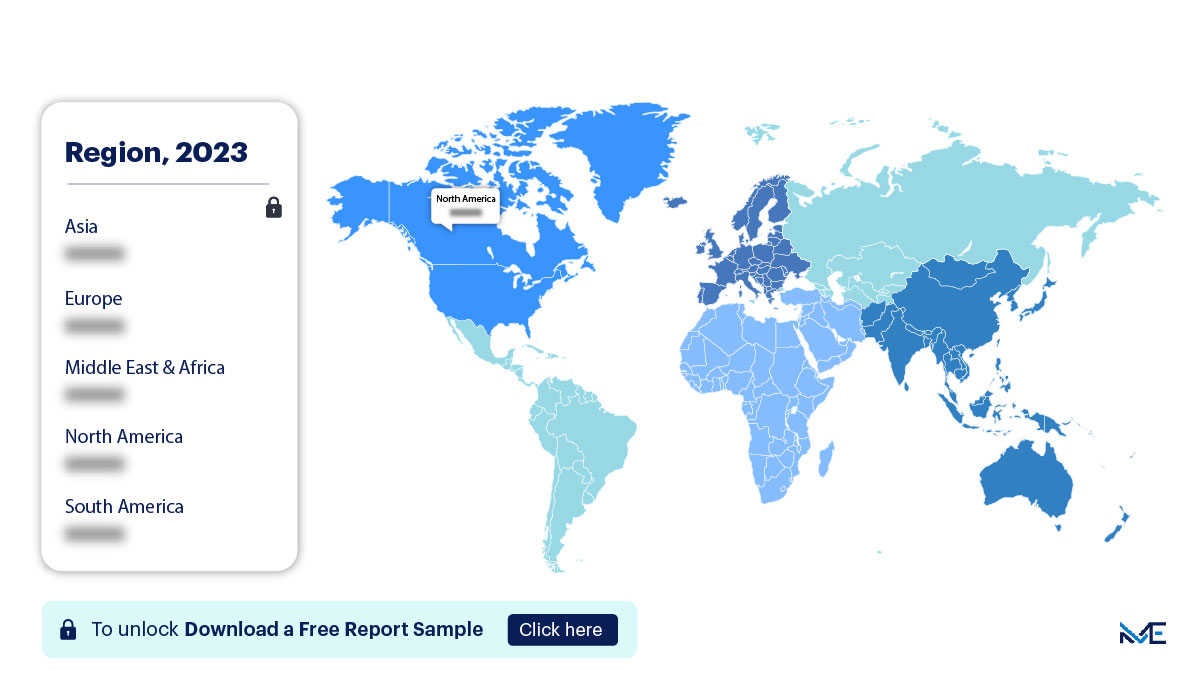Market Snapshot
| Study Period | 2019-2032 |
| Base Year | 2023 |
| Forcast Year | 2023-2032 |
| CAGR | 9.42 |


Gain accurate insights regarding the negative impacts of COVID-19 on all markets and industries
Download Sample PdfReport Overview
The Automotive Diode Market size is projected to grow at a CAGR of 6.75% from 2023 to 2032. The growth of this market is influenced by various factors, including the increasing demand for automobiles, rising adoption of electric vehicles, and the need for advanced safety and control systems in vehicles. Automotive diodes are electronic components that enable the flow of electricity in one direction while blocking it in the opposite direction. They play a crucial role in ensuring the proper functioning of various automotive systems, including lighting, power distribution, and electronic control units, enhancing the overall performance and safety of vehicles.
Automotive Diode Market Overview:
Drivers:
One of the primary driving forces behind the growth of the automotive diode market is the increasing demand for advanced safety and control systems in vehicles. The automotive industry is witnessing a significant shift towards the integration of advanced technologies to enhance vehicle safety, efficiency, and user experience. Automotive diodes are integral to systems like anti-lock braking systems (ABS), electronic stability control (ESC), and advanced driver-assistance systems (ADAS), enabling precise control and protection in critical situations.
Furthermore, the growth of electric vehicles (EVs) and hybrid vehicles is contributing to the market's expansion. EVs rely on advanced power electronics, which require diodes for various applications, including battery management, energy conversion, and motor control. As the EV market continues to grow, the demand for automotive diodes is expected to increase significantly, fostering market growth.
Trends:
An emerging trend in the automotive diode market is the integration of diodes in electric powertrain systems. As the automotive industry transitions towards electrification, diodes are increasingly being incorporated into electric powertrains to manage high-voltage systems efficiently. These diodes are essential for the rectification of alternating current (AC) from the charging infrastructure and for controlling the flow of direct current (DC) in the battery and drivetrain components, ensuring safe and efficient operation of EVs.
Additionally, the demand for smart diodes equipped with advanced features like real-time monitoring and fault detection is on the rise. These diodes can enhance vehicle safety and reliability by providing real-time data on electrical system health and performance.
Restraints:
One of the key challenges hindering the growth of the automotive diode market is the complexity of vehicle electrification. The increasing complexity of vehicle electrical systems, particularly in electric and hybrid vehicles, demands specialized diodes capable of handling high voltage and current levels. The design and manufacturing of these diodes can be intricate, requiring advanced technologies and stringent quality control measures.
Moreover, supply chain disruptions due to factors such as semiconductor shortages and global economic uncertainties can affect the availability of automotive diodes, leading to production delays and increased costs. Managing these challenges and ensuring a stable supply chain is crucial for the sustained growth of the market.
Automotive Diode Market Segmentation by Application:
The automotive lighting segment is expected to witness significant growth in the forecast period. Automotive diodes are essential components in vehicle lighting systems, including headlights, taillights, and interior lighting. They enable efficient energy conversion and control, contributing to improved lighting performance and energy efficiency. With the increasing focus on energy-efficient lighting technologies such as LED and adaptive lighting systems, the demand for automotive diodes in this segment is set to rise.
Automotive Diode Market Segmentation by Type:
The demand for Schottky diodes, a type of semiconductor diode known for their low forward voltage drop and high switching speed, is increasing in the automotive industry. Schottky diodes find applications in voltage clamping, protection circuits, and power supply units in vehicles. Their ability to handle high frequencies and provide low power losses makes them suitable for automotive power electronics, contributing to their growing adoption.
Regional Overview:

Download the report summary now!
Request pdf Sample

Download the report summary now!
Request pdf SampleNorth America is expected to make a significant contribution to the global automotive diode market. The region has a robust automotive industry with a strong focus on vehicle safety and advanced technologies. The presence of major automakers and semiconductor manufacturers in the United States and Canada further enhances the demand for automotive diodes. The growing adoption of electric vehicles in North America and the need for advanced power management systems will drive the market's growth in the region.
In 2020, the COVID-19 pandemic temporarily disrupted the automotive diode market, impacting manufacturing facilities and supply chains. However, as vaccination efforts progressed and lockdown measures were lifted in 2021, the automotive industry experienced a revival in demand and production, leading to the recovery of the automotive diode market.
Automotive Diode Market Customer Landscape:
The automotive diode market report provides insights into the customer adoption lifecycle, from early innovators to late-stage adopters. It assesses adoption rates across different regions and offers key purchase criteria and drivers of price sensitivity, assisting companies in shaping their growth strategies.
Major Companies in the Automotive Diode Market:
Companies in the automotive diode market are pursuing various strategies, including partnerships, mergers and acquisitions, and product/service launches, to strengthen their market presence.
- Diodes Incorporated: Diodes Incorporated offers a range of automotive diodes, including Schottky diodes, Zener diodes, and rectifier diodes, designed for various automotive applications.
- ON Semiconductor: ON Semiconductor provides automotive-grade diodes suitable for use in critical automotive systems, ensuring high reliability and performance.
- STMicroelectronics: STMicroelectronics offers automotive diodes with advanced features, including protection against voltage spikes and reverse polarity, addressing the specific needs of the automotive industry.
The research report also includes a comprehensive analysis of the competitive landscape, featuring information on key players, including:
- Infineon Technologies AG
- Vishay Intertechnology, Inc.
- NXP Semiconductors N.V.
- ROHM Co., Ltd.
- Toshiba Electronic Devices & Storage Corporation
Segment Overview:
The automotive diode market report presents revenue forecasts at global, regional, and country levels and analyzes the latest trends and growth opportunities from 2019 to 2032.
- Application Outlook (USD Million, 2019 - 2032):
- Passenger Cars
- Commercial Vehicles
- Others
- Type Outlook (USD Million, 2019 - 2032):
- Backward Diode
- Gunn Diode
- Laser Diode
- Light Emitting Diode
- Others
- Geography Outlook (USD Million, 2019 - 2032):
- North America
- United States
- Canada
- Europe
- United Kingdom
- Germany
- France
- Rest of Europe
- APAC
- China
- India
- South America
- Chile
- Argentina
- Brazil
- Middle East & Africa
- Saudi Arabia
- South Africa
- Rest of the Middle East & Africa
RESEARCH METHODOLOGY
A research methodology is a systematic approach for assessing or conducting a market study. Researchers tend to draw on a variety of both qualitative and quantitative study methods, inclusive of investigations, survey, secondary data and market observation.
Such plans can focus on classifying the products offered by leading market players or simply use statistical models to interpret observations or test hypotheses. While some methods aim for a detailed description of the factors behind an observation, others present the context of the current market scenario.
Now let’s take a closer look at the research methods here.
Secondary Research Model
Extensive data is obtained and cumulated on a substantial basis during the inception phase of the research process. The data accumulated is consistently filtered through validation from the in-house database, paid sources as well reputable industry magazines. A robust research study requires an understanding of the overall value chain. Annual reports and financials of industry players are studied thoroughly to have a comprehensive idea of the market taxonomy.
Primary Insights
Post conglomeration of the data obtained through secondary research; a validation process is initiated to verify the numbers or figures. This process is usually performed by having a detailed discussion with the industry experts.
However, we do not restrict our primary interviews only to the industry leaders. Our team covers the entire value chain while verifying the data. A significant number of raw material suppliers, local manufacturers, distributors, and stakeholders are interviewed to make our findings authentic. The current trends which include the drivers, restraints, and opportunities are also derived through the primary research process.
Market Estimation
The market estimation is conducted by analyzing the data collected through both secondary and primary research. This process involves market breakdown, bottom-up and top- down approach.
Moreover, while forecasting the market a comprehensive statistical time series model is designed for each market. Macroeconomic indicators are considered to understand the current trends of the market. Each data point is verified by the process of data triangulation method to arrive at the final market estimates.
Final Presentation
The penultimate process results in a holistic research report. The study equips key industry players to undertake significant strategic decisions through the findings. The report encompasses detailed market information. Graphical representations of the current market trends are also made available in order to make the study highly comprehensible for the reader.
Personalized Business Report Tailored to Your Requirements
- Our expert analysts collaborate directly with you to comprehend your specific needs.
- Get data on regions, segments, competitors, and vendors of your choice.
- Information is presented in alignment with your exact preferences and formatting.
Free Sample Report
"Find new revenue generation opportunities"

